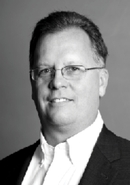New Tool Aids Early Detection
There is no doubt that the field of radiology, and health care in general, have improved through the advances enabled by technological innovation.

Worrell
Technology — in this case, artificial intelligence (AI) or machine learning (ML) — is striving to streamline many processes to make patient care more efficient and effective. Radiologists are working smarter and faster with more data available to them than ever before, but the availability of massive amounts of data creates a new set of challenges.
Many radiologists will tell you they are pressed for time as workloads continue to grow. While advanced technologies may have liberated them from some tasks, those advances are often offset with increased pressure to handle higher patient and data volumes.
This phenomenon is not limited to radiology, or even to health care.
When Henry Ford reinvented the assembly line in 1913, allowing a car to be assembled in 90 minutes rather than 12 hours, his goal wasn't to give his factory workers an additional 10½ hours of free time. He did it so the same number of people could make more cars in the same time. This is the dilemma many radiologists face today. The perceived mandate is to use the enhanced data available to create more insightful diagnoses and reports — and do so more quickly.
It is likely that the next stage in the evolution of big data for radiology will focus on doing more with less. Specifically, how can advanced data analysis tools be used to reduce the burden on radiologists facing steadily increasing amounts of data? The challenge is to effectively summarize the salient attributes in the data to achieve more efficient diagnoses.
"No matter how much data you collect," noted Steve Worrell, CEO of Riverain Technologies, "there are always scenarios where disease manifests itself in a very unusual way."
Consider, for instance, the process of analyzing rare diseases. It can be exceedingly difficult to amass enough data to build reliable analysis models when the disease is not only rare, but highly variable in presentation.
To address this, Riverain has been developing the concept and practice of using synthetic data to supplement acquired clinical data.
"Data is the medium through which we train software what to look for. If I'm solely dependent on data, I have to collect many samples for a very particular and diverse set of circumstances," Worrell said. "Beyond initially training a system, synthetic data can be used to identify weaknesses in the system and then construct data around the scenario. That is, instead of responding to a single instance, we can get at the underlying causes of failure."
Focusing on applications designed primarily with lung disease, Riverain has developed software that can be used to electronically construct three-dimensional nodules and insert them into CT scans in a proscribed, descriptive manner.
"So I can create true positive cases from normal cases with high precision, making a number of samples around various scenarios," Worrell said. He argues that this is what is missing in many AI systems.
"The fact that a vast majority of collected data is used to train the models instead of validating them should be a cause for pause," he added. "Use cases where models were trained on tens of thousands of images, but tested on hundreds, lends itself to a lack of robustness when fielded."
Riverain is one of the first companies to develop an FDA-approved tool that can detect problems earlier and deliver health care more effectively and efficiently through robust models constructed around synthetic data.
"We've translated it from theory to practice," Worrell said. He noted that work provides a foundation on which additional products can be built for different modalities and different parts of the body.
Using AI, radiologists may meet the same challenge Henry Ford met 100 years ago by leaving the tedious tasks to automation and focusing their expertise, enabling better health care for all.

